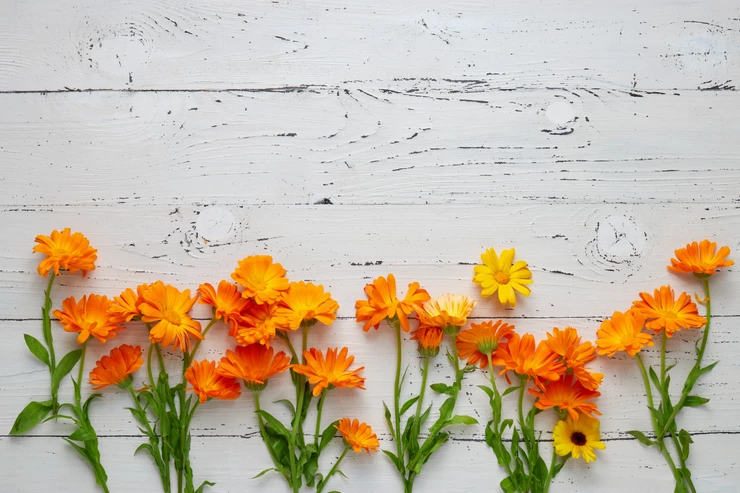Word explanation:
Calendula is derived from calendej (months), because the plant blooms almost all year round (January to October). Related this beautiful flower with the margarite, daisy, etc. the composite flowers, therefore, because the flowers grow out of a basket.
Mode of action:
The interaction of the various ingredients such as, triterpene saponins, flavonoids and the essential oils, act not only wound healing, but also Anti-inflammatory. Studies have also found other interesting effects, it is also antiviral and antifungal (virucidal and fungicidal), thus acts against microorganisms antimicrobial and strengthens the immune system.
According to folk medicine, poorly healing wounds and inflammation of the mucous membranes of the mouth and throat are also other areas of application in which calendula enjoyed great success. Many successes have also been achieved with sunburn, chilblains, varicose veins, boils, eczema and hemorrhoids.
Harvest:
Always harvest the whole flower, including the calyx, as the active ingredients are also found in the calyx. For harvesting, it is better to choose the orange flowers, because they have more carotene and are therefore more medicinal. It is best to use fresh flowers. Flowers must be harvested on a sunny day to avoid moisture.
Processing Methods:
Cold method:
Cut marigolds into small pieces and fill loosely into a screw-top jar. Then fill with olive oil until the flowers are covered. The whole should be left at room temperature for two to three weeks. Do not screw the screw cap on the first day. Better to cover the first week with a cloth and rubber to allow the moisture to escape.
Hot method:
Cut marigolds into small pieces and then put them in a fireproof jar. Then pour olive oil over them until they are covered. Now put it in a water bath. To do this, fill a pot with a little water and put a cloth in it so that the jar does not rattle at the bottom. Use a thermometer to check the temperature in the jar. It should not get above 70 degrees. Heat this for about 20 minutes like this. After 20 minutes, cover the jar with a cloth and rubber band and let it sit for a day or two. After this time, heat again briefly in a water bath for 70 degrees. Wipe all utensils with alcohol beforehand. Then filter the whole through a tea filter and pour into a jar.
For 100g of oil take 10g of beeswax. It is best to use beeswax beads, as they are easier to dose. Heat the oil only until the beads melt. Then add a few drops (about ½ tsp) of propolis. Propolis is the putty resin of bees and is strongly antibacterial, anti-inflammatory and germ-inhibiting. Which improves the shelf life of the ointment. Fill everything into light-proof jars.
Tip:
1.You can melt the coconut oil to make an ointment. Then let this harden again at room temperature.
2. Different scents can be added with drop tincture. E.g. lemongrass, vanilla, etc.




0 Comments